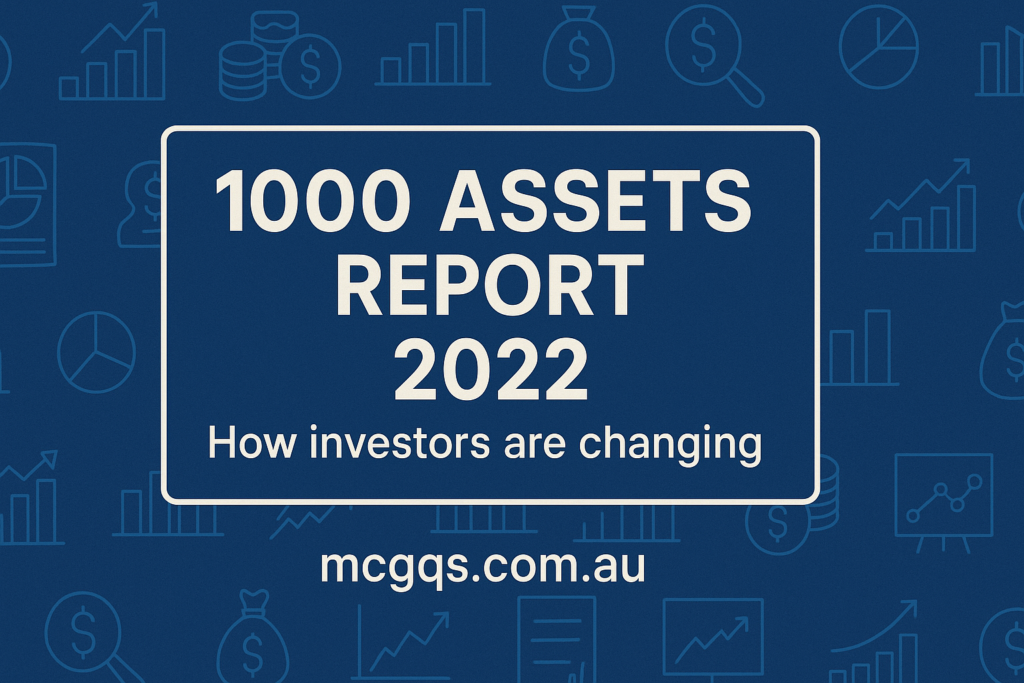1000 Assets Report 2022: How investors are changing

After the trials of 2020/21, I expect ‘adaptable’ and ‘resilient’ to be emblazoned across the plinth of every monument to human endurance erected for years to come.
We’ve been served up challenges in all parts of life and, to our credit, have mostly found ways to alter our behaviours and make the best of each situation.
A great example of this is in the property investment space. Describing the way investor sentiment and motivation has shifted in recent years has been difficult to do via hard data… until now that is.
The quantity surveying business I run with Marty Sadlier sees our team producing thousands of depreciation schedules every year for investors across the nation. In the process of pulling together these reports, we collate an extraordinary amount of interesting data about our clients and the investment properties they own.
It spurred us on to create the 1000 Assets series. It’s a report that’s updated regularly to track trends in investment property markets.
Our 1000 Assets report for 2022 has just been released and it delivers a set of numbers like no other.
For this article, I’d like to talk about the study’s revelations around how investor attitudes are changing, and what they reveal about market direction in the future.
What is the 1000 Assets report?
We’ve collated data captured during the preparation of our client’s depreciation schedules into 1000-property subsets from 2016 onwards.
From there, we’ve analysed the numbers to monitor changing investment trends. The study includes outcomes for each individual subset, painting a picture of behaviour at certain points in time. We’ve also tracked the trends between subsets to see how investor thinking and property decisions have evolved over the past six years.
The 2022 report: Changing investor behaviour
We’ve identified a range of outcomes in the most recent 1000-asset dataset which runs from July 2021 to March 2022. Here are some of the revelations.
One-fifth of landlords live in their investment first
The numbers showed 20.2 per cent of landlords lived in their assets before they’re retained as investment properties. The average lived-in period was four years and four months.
A percentage of these landlords are ‘accidental investors’. They didn’t intend to own an investment property when they first bought a home but became one when they decided to keep the asset instead of selling it.
What’s interesting is this latest percentage is lower than the previous year’s result which saw around 25 per cent all investments lived in first.
My take is that this is a combination of improved education, and accessibility to remote buying opportunities. Put simply, people became more aware of the benefits of investing in real estate and were happy to keep their home and investment property dealings separate. They were also more easily able to seek opportunities outside of their local area. Many appear to have adopted a more purposeful approach to investing rather than simply falling into it by accident.
The distance between home and investment has increased
Investors are increasingly investing further and further from their home suburb.
We compared the 1000 asset dataset up to January 2020 against the dataset to November 2021. It showed the average distance between a landlord’s home and their investment property rose from 294 kilometres to 559 kilometres. In addition, the percentage investing greater than 1000 kilometres from home more than doubled during the period.
There’s no doubt the pandemic played its part in this outcome, but so has advanced technology and remote accessibility to experts. For example, plenty of Sydney and Melbourne investors have been keen to purchase in Queensland during the pandemic years and they weren’t letting shut border stop them.
Investors are becoming savvier about their strategies.
The figures show investors are improving their self-education and are seeking ways to maximise their returns.
For example, the time between buying an investment property and ordering a depreciation schedule in 2021 is half of what it was in 2016.
A focus on finances and ways to make their investments work harder for them is obviously behind this outcome. With some financial insecurity creeping into household budgets, landlords have been motivated to boost their post-tax incomes as much as possible.
There’s less appetite for new-build investment
Investors are shying away from new construction, most likely in response to increased labour and material costs, coupled with a sparsity of available contractors.
Our numbers to 2022 reveal 16.24 per cent of investors bought new-build assets as compared to 2016 when 23.9 per cent of investment properties were new. Given that cost increases look entrenched for the next few years, I don’t expect this trend to reverse anytime soon.
What’s this tell us?
Just this small part of the study tells us investors are becoming increasingly more strategic on where they’re buying, what they’re buying, and ways to maximise their returns.
It shows that distance is no longer a barrier to investing, and our ability as investors to remove emotion and focus on the numbers has improved. Investors have always been sensitive to price, so increased building costs have stymied new build investment in lieu of established housing as well.
No doubt we’ll continue to evolve and adapt as investors to changing environments. If we watch trends and track outcomes, we can stay ahead of the curve. This is foundational to making better decisions in the future.
